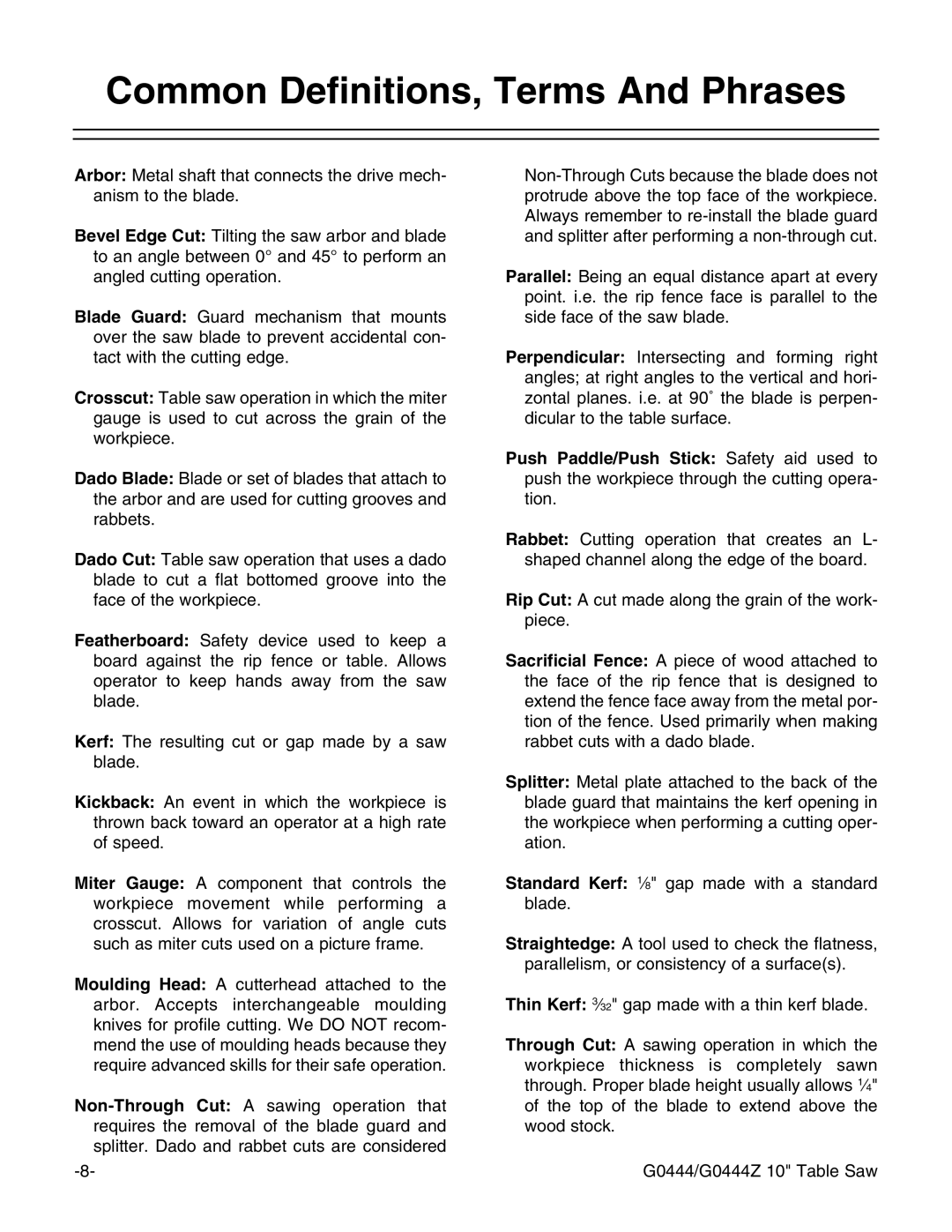Common Definitions, Terms And Phrases
Arbor: Metal shaft that connects the drive mech- anism to the blade.
Bevel Edge Cut: Tilting the saw arbor and blade to an angle between 0¡ and 45¡ to perform an angled cutting operation.
Blade Guard: Guard mechanism that mounts over the saw blade to prevent accidental con- tact with the cutting edge.
Crosscut: Table saw operation in which the miter gauge is used to cut across the grain of the workpiece.
Dado Blade: Blade or set of blades that attach to the arbor and are used for cutting grooves and rabbets.
Dado Cut: Table saw operation that uses a dado blade to cut a flat bottomed groove into the face of the workpiece.
Featherboard: Safety device used to keep a board against the rip fence or table. Allows operator to keep hands away from the saw blade.
Kerf: The resulting cut or gap made by a saw blade.
Kickback: An event in which the workpiece is thrown back toward an operator at a high rate of speed.
Miter Gauge: A component that controls the workpiece movement while performing a crosscut. Allows for variation of angle cuts such as miter cuts used on a picture frame.
Moulding Head: A cutterhead attached to the arbor. Accepts interchangeable moulding knives for profile cutting. We DO NOT recom- mend the use of moulding heads because they require advanced skills for their safe operation.
Parallel: Being an equal distance apart at every point. i.e. the rip fence face is parallel to the side face of the saw blade.
Perpendicular: Intersecting and forming right angles; at right angles to the vertical and hori- zontal planes. i.e. at 90û the blade is perpen- dicular to the table surface.
Push Paddle/Push Stick: Safety aid used to push the workpiece through the cutting opera- tion.
Rabbet: Cutting operation that creates an L- shaped channel along the edge of the board.
Rip Cut: A cut made along the grain of the work- piece.
Sacrificial Fence: A piece of wood attached to the face of the rip fence that is designed to extend the fence face away from the metal por- tion of the fence. Used primarily when making rabbet cuts with a dado blade.
Splitter: Metal plate attached to the back of the blade guard that maintains the kerf opening in the workpiece when performing a cutting oper- ation.
Standard Kerf: 1Ú8" gap made with a standard blade.
Straightedge: A tool used to check the flatness, parallelism, or consistency of a surface(s).
Thin Kerf: 3Ú32" gap made with a thin kerf blade.
Through Cut: A sawing operation in which the workpiece thickness is completely sawn through. Proper blade height usually allows 1Ú4" of the top of the blade to extend above the wood stock.
G0444/G0444Z 10" Table Saw
